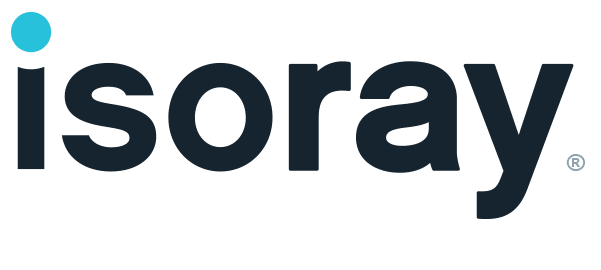The Society of Thoracic Surgeons Annual Meeting is the pinnacle of scientific education and new research results delivery in the global cardiothoracic community. Included within this community are the surgeons treating lung cancer patients. Through this lens, Isoray eagerly anticipates the STS 2017 January 21-25 in Houston.
Even as lobectomy continues to be the gold standard for medically-operable patients with Non Small Cell Lung Cancer (NSCLC), “more than 20% of patients who are diagnosed with stage I or stage II NSCLC do not undergo surgery.” This may be due to a variety of reasons, including poor cardiopulmonary function that compromises the overall health of the patient. One drawback of a lobectomy is its potential impact on pulmonary function. These patients may benefit from a less aggressive surgical treatment, such as a sub-lobar resection.
Cesium-131 Brachytherapy mesh provides focal radiation to surgically managed patients with Non Small Cell Lung Cancer.
Brachytherapy is an established method to deliver a highly targeted dose of radiation therapy to soft tissue tumors. The procedure has become an accepted treatment for prostate cancer and is gaining popularity at leading academic institutions for the treatment of brain metastases, recurrent meningioma, gynecologic and recurrent H&N cancers. One opportunity where brachytherapy may provide additional benefit is in the treatment of lung cancer.
Isoray’s Cesium-131 mesh has shown promise in the treatment of certain types/stages of lung cancer.
Those patients who are not candidates for lobectomy should consider, with their physicians, a sub-lobar resection wedge resection (WR) or segmental resection with adjuvant brachytherapy. To compensate for the less extensive surgical resection, brachytherapy has been combined with WR to achieve results equivalent to lobectomy. In reported retrospectives studies WR with brachytherapy report excellent local control (LC) rates in early stage lung cancer.
“WR plus Cs-131 is an excellent treatment option for patients with early stage non-small cell lung cancer that are not candidates for lobectomy. For high-risk WR we favor use of Cesium-131 brachytherapy.” Bhupesh Parashar, MD – from “Analysis of stereotactic radiation vs wedge resection vs wedge resection plus Cesium-131 brachytherapy in early stage lung cancer, Brachytherapy 14 (2015) 648-654
Read more about Cesium-131’s applications for NSCLC including almost a dozen peer-reviewed studies here.
In addition to connecting with as many surgeons practicing in this area to discuss the benefits of Cesium-131 brachytherapy for lung cancer patients, the following STS 2017 sessions are of keen interest to our team.
Monday, Jan. 23, 1:30 p.m. General Thoracic, Lung Cancer I, especially “Radiological Classifications of Multiple Lung Cancers and the Prognostic Impacts Based on the Presence of Ground Glass Opacity Component on Thin Sectioned Computed Tomography.”
Tuesday, Jan. 24, 7:30 a.m. Early Riser Health Policy Forum – Merit Based Incentive Payment System Implementation. “In passing the Medicare Access and CHIP Reauthorization Act (MACRA), Congress changed how all physicians will be paid under the Medicare program. As the Centers for Medicare & Medicaid Services begins to implement the new law, a number of policies regarding cardiothoracic surgeons’ payments have come to light. This session will focus on the Merit-Based Incentive Payment System (MIPS)—the revised fee-for service payment model that will affect most physicians, including STS members.”
Tuesday, Jan. 24, 1:00 p.m. General Thoracic, Lung Cancer II, especially “Defining Selection Bias: Development of a Surgical Selection Score for Advanced Stage Non-Small-Cell Lung Cancer Patients.”
Find the entire STS 2017 conference advance program here.
During STS 2017, the Isoray team is eager to learn more about the state of lung cancer treatment from the front line surgeons, particularly those engaging in clinical studies who are determined to bring the best science has to offer to improve patient outcomes. We believe adjuvant brachytherapy may have significant value when treating non-small lung cancer with known risk factors (including: tumor sizes > 2 cm, visceral pleural invasion, anticipated small margins, etc.). Solid predominant histologic patterns are often visible radiographically, pre-operatively, and is a predictor of increased risk of recurrence.
Learn about Isoray’s Cesium-131 brachytherapy at STS 2017 by visiting our booth (#145), or, even better, schedule a meeting in advance by contacting Bill Gallien via email at wgallien@isoray.flywheelstaging.com or calling Bill directly on (330) 388-8106.

